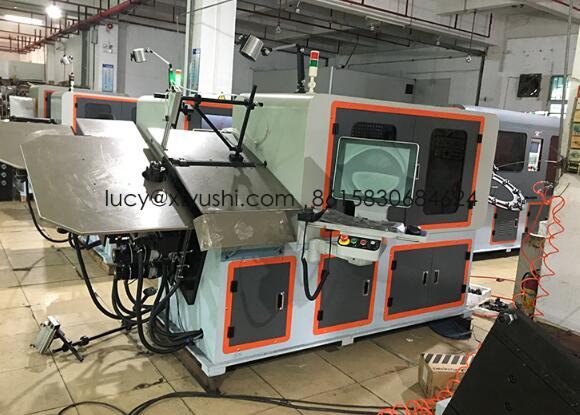How Do I Program a CNC Wire Bending Machine?

You typically create a CAD drawing of the desired wire form, which is then converted into a CNC program using dedicated software, defining bend angles, radii, and wire feed movements.
CNC (Computer Numerical Control) wire bending machines have revolutionized wire bending by combining precision, automation, and versatility. These machines allow manufacturers to create intricate wire shapes efficiently, catering to industries like automotive, construction, medical, and furniture. However, programming a CNC wire bending machine requires knowledge of its operation, software, and materials. This article provides a detailed overview of programming a CNC wire bending machine, including essential steps, best practices, and insights into the advantages of advanced machines like those offered by JUSHI.

What Is CNC Programming for Wire Bending Machines?
Programming a CNC wire bending machine involves creating a set of instructions (or code) that tells the machine how to bend a wire to meet specific design requirements. These instructions are fed into the machine’s control system, which processes the data and directs the machine to execute precise bending operations. The programming process typically uses CAD/CAM (Computer-Aided Design/Computer-Aided Manufacturing) software.
Steps to Program a CNC Wire Bending Machine
-
Define the Wire Bending Requirements
Before starting, you need to gather all necessary details, including:
- Wire material (e.g., steel, aluminum, copper).
- Wire diameter.
- Required bending angles and radii.
- End product dimensions and tolerances.
-
Select or Create a CAD Design
Most CNC wire bending machines use CAD files as the blueprint for operations. Design the wire component using software like AutoCAD or SolidWorks.
-
Convert the CAD File into a CNC Program
Use CAM software to convert the CAD design into G-code or machine-readable instructions. Advanced machines, including models by JUSHI, come with integrated software that simplifies this step.
-
Upload the Program to the Machine
Transfer the generated G-code file to the CNC wire bending machine via a USB drive, Ethernet, or cloud software.
-
Set Up the Machine
Install the appropriate tooling and calibrate the machine to align with the program’s parameters.
-
Run a Test Bend
Perform a trial run using a scrap wire to validate the program. Inspect the output for accuracy.
-
Execute Production
Once the program is verified, begin full-scale production and monitor the process to ensure consistent output.
Best Practices for Programming a CNC Wire Bending Machine
- Understand Material Behavior: Different materials have varying levels of ductility and spring-back effects.
- Optimize Bending Sequence: Arrange the bending sequence to minimize machine movements and reduce cycle times.
- Set Correct Feed Rates: Adjust the wire feed speed based on material properties to prevent deformation.
- Regularly Update Software: Use the latest CAD/CAM software versions to enhance compatibility and features.
- Maintenance Matters: Regularly inspect and maintain the machine and tooling for consistent performance.
Advantages of CNC Wire Bending Machines
CNC wire bending machines offer several advantages, including:
- Precision and Accuracy: Even complex designs can be replicated consistently.
- Efficiency: Automation reduces production time, especially for large batches.
- Versatility: Suitable for a variety of wire materials and diameters.
- Reduced Waste: Optimizes material usage and improves cost-efficiency.
- Integration with Industry 4.0: Advanced machines are equipped with smart features like remote monitoring and real-time diagnostics.
Industry Insights
The global CNC wire bending machine market is experiencing steady growth, driven by increasing demand for automation and precision. According to industry reports, the market is projected to grow at a compound annual growth rate (CAGR) of over 7% between 2023 and 2030.
Conclusion
Programming a CNC wire bending machine may seem complex at first, but by following a systematic approach and leveraging advanced software tools, manufacturers can achieve remarkable results. By investing in high-quality CNC wire bending machines, such as those offered by JUSHI, businesses can stay ahead of the competition with enhanced efficiency, precision, and scalability.

PREVIOUS:
Contact Us
E-mail :
Mobile/whatsapp/wechat::
Address:Xingjiawan Town Industrial Zone, Renze District, Xingtai City, Hebei Province.






